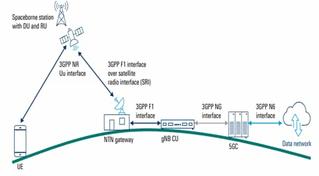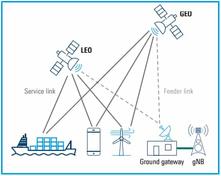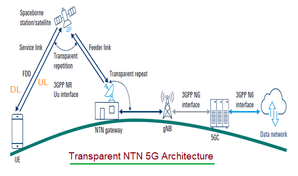Difference between gNB vs NTN gNB vs sNB
Advertisement
All the terms gNB, NTN gNB and sNB refer to the same 5G base station but are used in different contexts. They differ in function, location and role within the 5G system.
gNB (gNodeB)
- The gNB is the standard 5G base station used in terrestrial (ground-based) 5G networks.
- It connects the User Equipment (UE) to the 5G Core Network (5GC) via the NG interface.
- Handles radio transmission/reception, scheduling, and RAN control.
- Can be connected to the 5G Core through fiber, microwave or satellite backhaul.
- Deployed on terrestrial sites — e.g., towers, rooftops, small cells.
NTN gNB
-
It is a 5G base station function adapted for Non-Terrestrial Networks i.e., where the radio interface involves a satellite or aerial platform.
-
A logical term used to specifically identify a gNB that provides connectivity via a non-terrestrial network. There are two possible deployment modes viz. transparent and regenerative architecture.
- In transparent payload mode, the satellite acts as a “bent pipe”(just relays signals). The NTN gNB is located on the ground (at the gateway).
- In regenerative payload mode, the satellite performs baseband processing. The NTN gNB is located onboard the satellite.
sNB (satellite Node B)
- The SNB is a specialized form of NTN gNB, typically referring to the onboard gNB function integrated into the satellite (Regenerative mode). It acts as a 5G base station in space.
- The satellite itself includes gNB functionality — so it can directly manage radio resources and communicate with UEs.
- Reduces latency but requires high onboard processing capability and power resources.
- Often used in advanced LEO NTN systems with regenerative payloads.
Summary: gNB is the general term. NTN gNB specifies the type of network (non-terrestrial). sNB specifies the role and physical context (a satellite enabled base station).
Advertisement
 RF
RF

